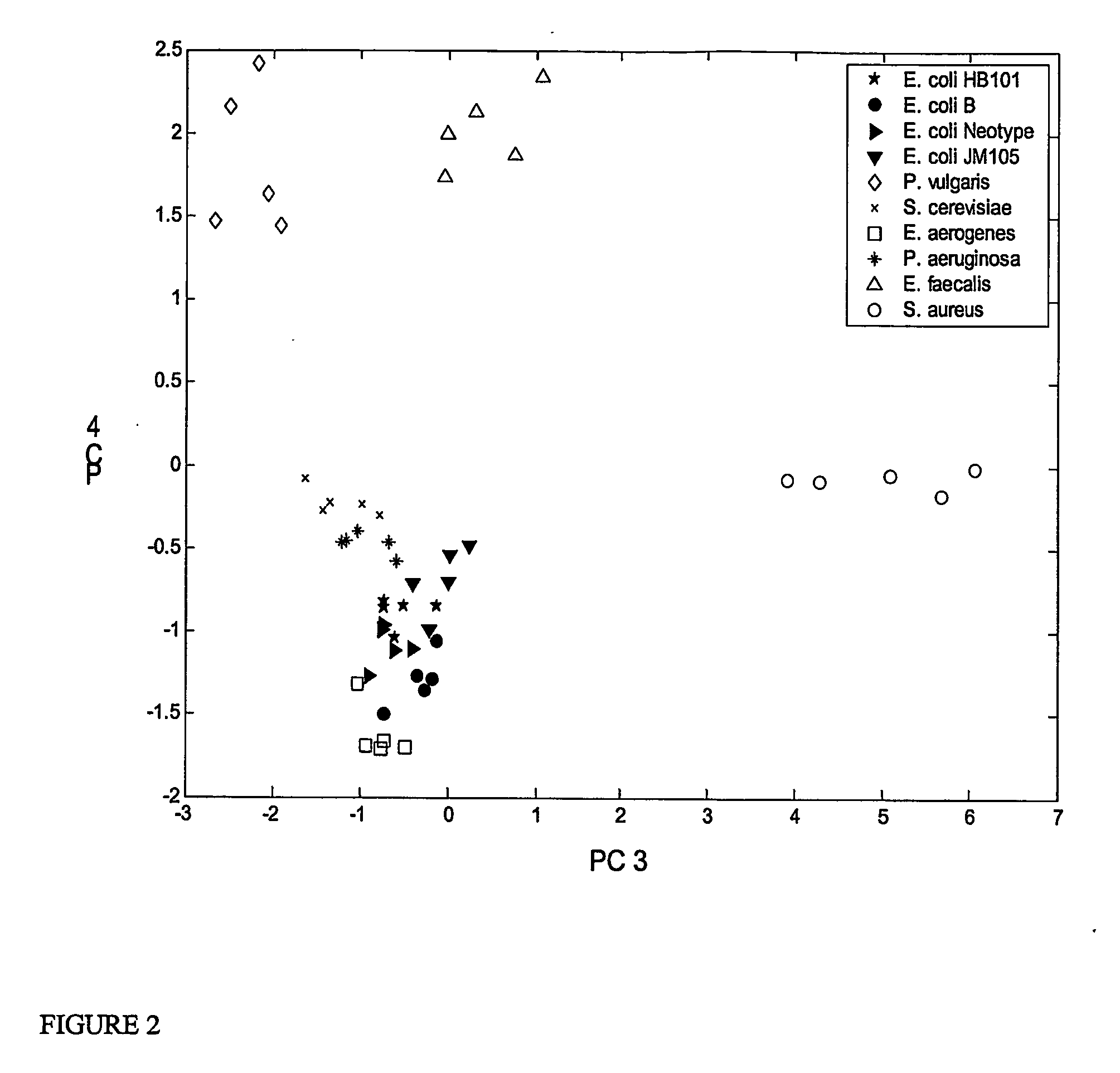Electrochemical assay for the identification of microorganisms
a microorganism and electrochemical technology, applied in the field of electrochemical assays for the identification of microorganisms, can solve the problems of inability to definitively identify an unknown microorganism, time-consuming and often unreliable available tests, and lack of genotypic methods to assess the active pathway presen
- Summary
- Abstract
- Description
- Claims
- Application Information
AI Technical Summary
Benefits of technology
Problems solved by technology
Method used
Image
Examples
example 1
Respiratory Cycle Activities in the Presence of Effector Compounds
[0027] In this example, the assay uses the following steps: (1) The procedure involves combining 200 μL of the bacterial culture with 1300 μL of buffer (that contains or does not contain the effectors and 5 μM DCIP) for a fixed time (10 min) and at a fixed temperature (35° C.) in a two-electrode electrochemical cell; (2) this is followed by the addition of the mediator (500 μL of 0.2 M potassium ferricyanide) for a fixed time (10 min) and at a fixed temperature (35° C.); and (3) measurement of current at a fixed voltage difference (−100 mV) for a fixed time (120 sec). The ferricyanide solution is added so that the final ferricyanide concentrations is 50 mM.
[0028] In this configuration the assay uses two platinum electrodes each having a surface area of approximately 0.017 cm2. The measured current is proportional to the concentration of the least-concentrated species of the redox-couple in solution. In the present ...
example 2
Differentiation Between Gram-Positive and Gram-Negative Bacteria
[0033] The following steps are used for each test: (1) preheating for a fixed time (4 min) and a fixed temperature (35° C.) a 150 μL aliquot of buffer containing 1 mM glucose (glc) with or without 5 μM DCIP; (2) this is followed by the addition of 50 μL of the bacterial suspension to the sample for a fixed time (10 min) and at a fixed temperature (35° C.); (3) this is followed by the addition of the mediator (50 μL of 0.4 M potassium ferricyanide) for a fixed time (10 min) and at a fixed temperature (35° C.); and (4) measurement of current at a fixed voltage difference (100 mV) between two platinum electrodes for a fixed time (120 sec) at a fixed temperature (35° C.). The final ferricyanide concentration in the sample prior to reaction with the microorganism is 40 mM.
[0034] In this configuration the assay uses two platinum electrodes each having a surface area of approximately 0.03 cm2. The measured current depends o...
example 3
Differentiation of 10 Microbial Strains Using Pattern Recognition by Principal Component Analysis of Respiratory Activity Data
[0038] In this example, each microorganism is subjected to 22 different effector compounds in addition to control measurements. The following steps are used for each test: (1) preheating for a fixed time (4 min) and a fixed temperature (35° C.) a 150 μL aliquot of buffer containing the effector compound and 5 mu.M DCIP; (2) this is followed by the addition of 50 μL of the bacterial suspension to the sample for a fixed time (10 min) and at a fixed temperature (35° C.); (3) this is followed by the addition of the mediator (50 μL of 0.4 M potassium ferricyanide) for a fixed time (10 min) and at a fixed temperature (35° C.); and (4) measurement of current at a fixed voltage difference (100 mV) between two platinum electrodes for a fixed time (120 sec) at a fixed temperature (35° C.). The final ferricyanide concentration in the sample prior to reaction with the ...
PUM
| Property | Measurement | Unit |
|---|---|---|
| temperature | aaaaa | aaaaa |
| fixed voltage difference | aaaaa | aaaaa |
| surface area | aaaaa | aaaaa |
Abstract
Description
Claims
Application Information
 Login to View More
Login to View More - R&D
- Intellectual Property
- Life Sciences
- Materials
- Tech Scout
- Unparalleled Data Quality
- Higher Quality Content
- 60% Fewer Hallucinations
Browse by: Latest US Patents, China's latest patents, Technical Efficacy Thesaurus, Application Domain, Technology Topic, Popular Technical Reports.
© 2025 PatSnap. All rights reserved.Legal|Privacy policy|Modern Slavery Act Transparency Statement|Sitemap|About US| Contact US: help@patsnap.com



